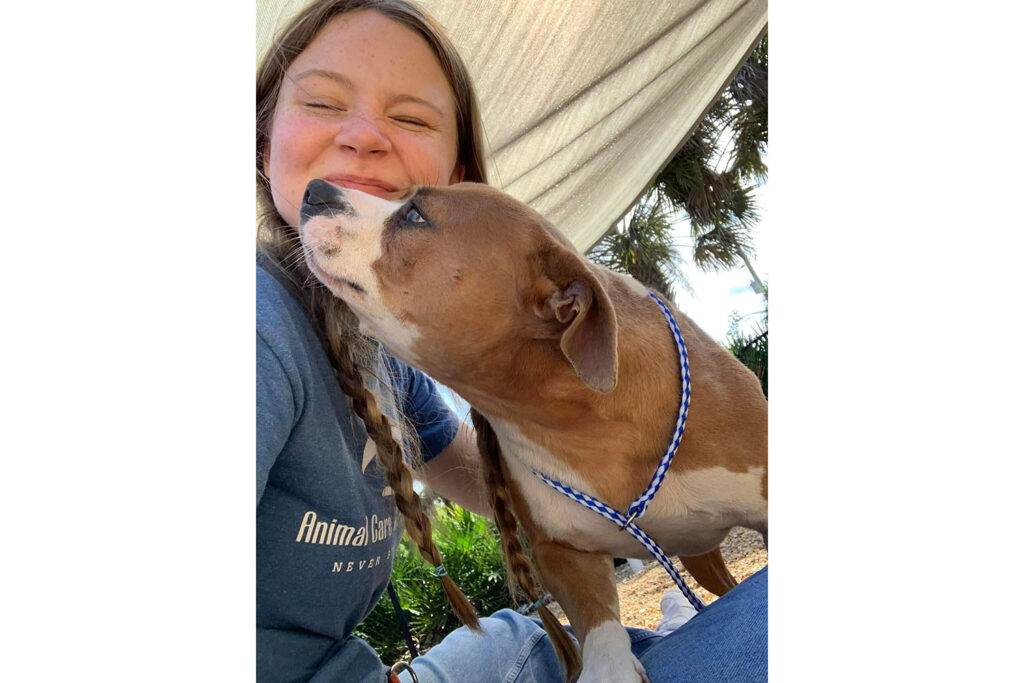
By Alliance Intern Cate Rosa from Boston University ‘26
Picture this: It’s 3 in the morning. Your neighbors are all screaming and throwing themselves against their walls. You moved in a week ago. All alone. You’re confused. Anxious. Petrified. Too scared to eat the unfamiliar food. You haven’t slept for days inside of your new home that’s just big enough to lay down on the cold tile floor. It’s been days since you’ve seen the sun. You miss your family and wait anxiously for the day you see them again. The day that never comes. This is the life for nearly 4 million dogs in shelters in the United States.
I’ll never forget my first time. I remember the stench. The desperation in their bark. The sound of my mom’s voice. My feet shuffling on the floor. I couldn’t wrap my mind around why anyone in the world would commute 45 minutes into downtown Jacksonville every morning to spend the day in a place like this.
But my world changed when we exited the lobby into the runs of kennels. Row after row, aisle after aisle, kennel after kennel, my heart sunk deeper and deeper. Some of them excitedly watched you, hoping you had a leash in hand. Some of them cowered in fear. Some of them hopelessly shouted with voices lost in translation. And worst of all, some of them did nothing. They had given up after years of trying to be seen in a world where they were invisible.
I walked past 632 piteous eyes flashing abandonment, loyalty, tragedy, horror, love, fear, and of loss. Over the next few years, I made it my mission to give them voices. To grant them more than a number on a piece of paper. To tell their stories.
There were stories with happy endings, like Lux, who had stolen so many hearts that he had children’s books written after him and people willing to fly him out to Michigan to find him a home. And Mr. Bill, who ended up in my family’s home and was the happiest dog in the world despite having three legs, one eye, and a heart condition.
Others were not so lucky with their fate. Connie was a sweet girl whose life was proved difficult by the scars on her body and BB pellets found lodged in her neck. However, she was a black mid-aged dog that looked a lot like all the other black mid-aged dogs in the shelter. Dogs like Connie are constantly overlooked by people who want puppies, fluffy dogs with blue eyes, and other distinctive traits. After years of a hard life and months spent at the shelter, a nice family gave her a chance but she had become too frustrated by all she had been through.
From Kodak and Montana, good boys who became products of the stressful environment, to Calliope and Jeepers, sweet older girls that lacked the “woo-factor” to catch the public’s eye, these animals taught me how to live.
They taught me to live with love. With compassion. They taught me to always give second chances, and third and fourth, that you never know what someone has gone through. They taught me to remain hopeful because sometimes that’s all you have, and sometimes that’s all that you need. They taught me not to be afraid. To open the eyes that are so quick to shut when faced with the harsh realities of the world. Most importantly, they taught me to use my voice. To say the words for those that cannot speak them.
